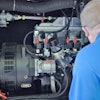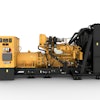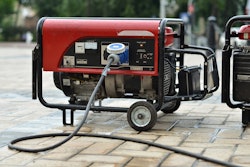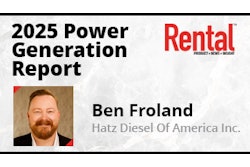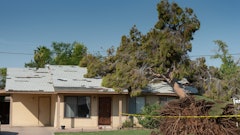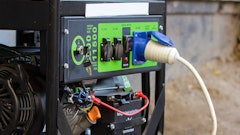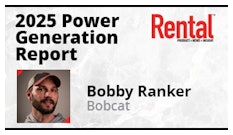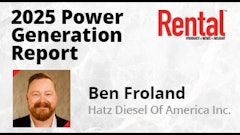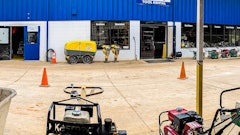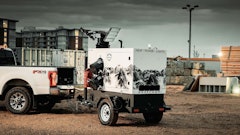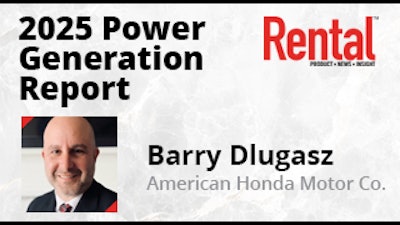
Barry Dlugasz, director, Honda Power Equipment Sales, American Honda Motor Company, Inc., shares his insight into the generator sector of the equipment rental industry.
Rental connected with Dlugasz in May 2025.
Q. What are the trends in generators for equipment rental right now?
 Barry Dlugasz, American Honda Motor Company Inc.American Honda Motor Company Inc.
Barry Dlugasz, American Honda Motor Company Inc.American Honda Motor Company Inc.
They have new standards coming, but because of the wildfires, California recently granted an exemption for generators. Before, there were no generators out there to be had — nobody was meeting their new regulations, so they granted an exemption, and we're working with them. They were overwhelmed by the amount of contractors, government entities, etc., that specifically were requesting Honda.
We're far from perfect, but people trust Honda.
There is a lot of competition that has come in through the pandemic. A lot of overseas-built products are coming in, and the competition's gotten better, but they still don't quite meet up to the Honda standard of quality and the stable power and longevity of our engine parts. From that standpoint, in the contractor rental segment, there's really nothing battery-powered that can quite make up for the power of gas in the generator.
Q. Can you elaborate a bit more about the California exemptions?
Because Honda didn't have certification to sell there, they basically granted an exemption for us. However, this ends June 30. How we were able to get the exemption? The California and Los Angeles Fire Departments actually had previous Honda generators left overseas for a humanitarian mission—and it just wasn't feasible to bring a hazmat generator back. They specifically requested to replace them with non-certified Honda generators, and the state of California allowed that as an emergency exemption.
Beyond their normal exemption, they granted us an additional exemption to allow older models to be sold that we call "49 state" because they're not allowed to be sold in California.
Editor's Note: Honda recently announced that Honda EU3200i and Honda EU7000iS Super Quiet Series generators meet both U.S. EPA Phase 3 emissions standards and CARB Tier 4 compliance requirements, and both models are now on sale in California.
Q. How are generators changing? What technology trends are happening?
On the generator side of things, rental companies or commercial customers using product every day don’t encounter carburetion problems—if the fuel is always fresh and regularly going through the system, it's not an issue.
What we are seeing is a trend toward fuel injection. There's two advantages with fuel injection on generators: one is regulatory and the other concerns the recreational user. If you're an RV owner and you're using a generator every three to six months and leave the gas sitting in the carburetor, there's a good chance you're going have a problem when you go to start it. Gas doesn't last long. With fuel injection, fuel can still go still go bad, but in a pressurized system, you can usually fire [the generator] up on the first pull after leaving gas in it for extended periods. For the occasional user, that's where that technology falls in.
And then there’s the [potential] Consumer Product Safety Commission (CPSC) regulation proposed two or three years ago that could impact a generator market. In a nutshell, what the CPSC said is that you need to limit the carbon monoxide (CO) coming out of generators.
During the past several years, the industry is seeing CO minders that shut off generators if too much carbon monoxide is detected (case in point: the Honda CO-MINDER system launched in 2020 across the company’s entire generators lineup).
As background, overall, CO detectors on generators can't detect accurate CO levels if the wind is blowing in opposite directions while the unit is operating. The CPSC's proposed regulation—the regulation that everybody in the industry thought was going to be reality in 2024—would have basically meant that in order to meet the 50 percent reduction in carbon monoxide, every generator would have to integrate fuel injection. Today, Honda is poised to roll-out improvements with our CO-MINDER system, equipping our portable generators across the Economy, Deluxe, Industrial and Super Quiet Series with CO-MINDER enhancements, meaning all Honda models meet ANSI/PGMA G300-2023 safety and performance standards.
As far as advancement goes, I think we're really the only company that really went after and developed generators specifically to meet this regulation. Now, we wonder if it'll ever come. I'm not sure they have the regulatory authority to do it anymore, but I'll leave that for the politicians and the lobbyists. But it was a real thing for the generator that really stalled development of future generators. Our lineup now is probably 40 or 50 different types of SKUs.
As far as advancement goes, that's really where our focus has been because in 2028, supposedly there's no gas generators at all in California. We're looking at the future and making sure that we are regulatory and that we're still meeting our own company initiatives to be carbon neutral and zero emissions by 2050.
Q. Do you think the rest of the country will follow California's regulations eventually?
Whatever California does, each manufacturer generally adopts its own timeline. At Honda, we normally look ahead four to six years. European regulation can come into that, too, at times. At this point, all the de facto timelines that we used to look at and plan on, I don't think you can plan on them anymore.
Q. What would be the best questions for equipment rental companies to ask when considering adding a new generator to their fleet?
That's a good question because every rental company has a different need. If you're talking rental versus commercial, I think somebody renting out wants the most simplistic user operation for the best user experience. That's where a fuel-injected generator makes it really, really simple—simplifying it for the end user.
Q. Aside from fuel-injection, what else is happening in generators to increase efficiency?
From an efficiency standpoint, we’ve released an upgraded EU3200i generator, and enhancements to our EU7000is model will be released in July. These improvements are designed to reduce fuel consumption and increase sensitivity to the presence of CO.
Many of the changes we’ve recently integrated have been very regulatory-focused to make sure that we could still sell generators in the future — while concentrating on the needs of customers who care most about reliability and quiet operation.
Q. What is on the horizon for Honda generators?
Honda recently announced that we're starting the mass production of solid-state batteries in 2026. Everybody believes solid-state batteries to be the game changer in the battery world.
If it comes to market, it'll probably be more on the automotive side. Regardless, battery development will continue, and those batteries will be more affordable during the next 5-10 years, and they likely will be better than internal combustion engines (ICE).
The technology exists now, it’s just not yet obtainable. But Honda is among the first to start a mass production facility of a solid-state battery.
Q. Do you have any final thoughts for equipment rental companies?
From our experience, we were pretty dominant from a market share perspective in the rental industry. We still lead the pack, but we did lose some momentum during the pandemic when we were unable to supply based on demand.
Rental companies brought in competitive situations, and a lot of those rental companies and commercial companies are all going back to Honda once they run them through their fleet.
A rental company is there to make money. They want to rent out product. They want machines that operate flawlessly. They want customers to have a great experience. Most of the time, Honda is in a better position to provide that experience than some of our competitors (who make great products that are getting better every day). But when you start talking about the long hours rental customers tend to run equipment, reliability that’s exceptional is a big factor…which is why if there’s an application for an engine on a piece of power equipment, you’ll likely find a Honda providing that power.


